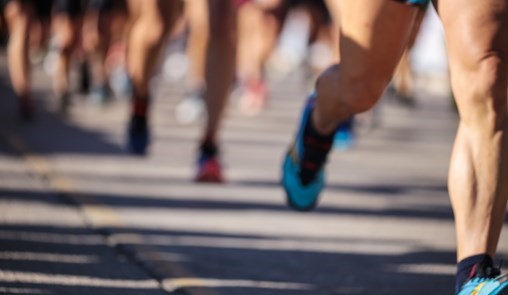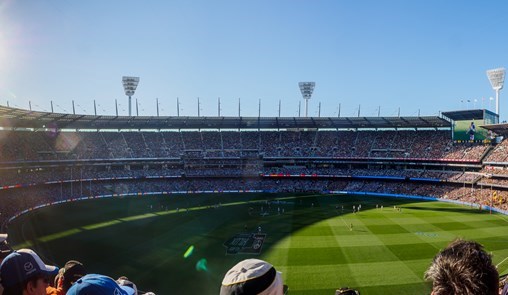The World Anti-Doping Code (WADA Code) has traditionally applied the legal principle of strict liability to anti-doping rule violations. Sanctioning of athletes by the Court of Arbitration for Sport (CAS) may take into account factors which could be considered unintentional doping.
USA distance runner Shelby Houlihan and Australian swimmer Brenton Rickard both pleaded unintentional doping in recent cases. Last week CAS handed down a four-year ban to Houlihan, while a few days earlier, the International Olympic Committee (IOC) withdrew its case against Rickard.
So why did Houlihan receive the maximum four-year sanction, while Rickard was deemed to have no [further] case to answer?
The WADA Code – strict liability vs unintentional doping
The WADA Code was first adopted in 2003 as a tool to harmonise regulations relating to anti-doping across all sports and in all countries in the world.
Article 2 of the WADA Code defines what will constitute an anti-doping rule violation. In summary, Article 2 of the WADA Code applies strict liability to constitute an anti-doping rule violation where there is the ‘presence of a prohibited substance or its metabolites or markers in an athlete's sample’.
Article 2.1 applies strict liability principles in clarifying that ‘it is not necessary that intent, Fault, Negligence or knowing Use on the Athlete’s part be demonstrated in order to establish an anti-doping rule violation’. That looks simple enough, however, like a lot of legal issues, there can be exceptions to the strict application of the rule.
When it comes to sanctioning an athlete for an anti-doping rule violation, Article 10 of the WADA Code enables a range of factors to be considered by CAS. Factors that CAS may consider in sanction an athlete (or not imposing a sanction) include consideration of how the prohibited substance entered the athlete’s system, whether the athlete was at fault, or whether the athlete intended that the substance would improve their sporting performance. These factors could broadly be considered as amounting to ‘unintentional doping’.
Unintentional doping and contaminants
On 9 November 2020, it was announced by the Anti-Doping Division of CAS that a retested sample provided by Rickard in 2012 had returned a positive result for furosemide, a banned diuretic.
It has been suggested that the presence of the diuretic was caused by ingestion of contaminated over-the-counter pharmaceuticals.
Applying the principle of strict liability set out in Article 2 of the WADA Code, the presence of furosemide in Rickard’s system was enough to establish an anti-doping rule violation, leading to sanctions, which may include disqualification from the events he competed in at the 2012 London Olympic Games. If disqualified, the Australian men’s 4x100m medley relay team would be stripped of their bronze medals and Rickard’s decorated career would be forever tarnished.
So why was the strict liability principle not applied in the Rickard case, especially considering the CAS decision relating to fellow Australian swimmer Shayna Jack?
Many, including the CEO of the US Anti-Doping Agency, Travis Tygart, have argued for some time that ‘an inherently unjust system’ that applies strict liability to treat all athletes as intentional cheats, especially when the anti-doping rule violation in question was a minute trace of a banned substance, could have arisen from external factors such as a contaminant, and which have no performance enhancing benefits for athletes.
Shayna Jack was deemed to have committed an anti-doping rule violation in 2019 when minute traces of the drug Ligandrol were found in her system. Jack argued that the minute traces in her system must have arisen from a contaminant or other reason outside her control. Jack was handed a two-year sanction by CAS, despite an expert report commissioned by Sport Integrity Australia (SIA) stating the amount of Ligandrol in Jack’s system being so minute that it was ‘pharmacologically irrelevant’, and unlikely to have performance benefits. Pursuant to Article 10 of the WADA Code, Jack’s sanction was reduced to two years on the basis that on the balance of probabilities, Jack had not intentionally committed an anti-doping rule violation. SIA and WADA appealed the two-year sanction imposed on Jack, arguing that the full four-year sanction should have been applied.
On 20 May 2021, WADA’s executive committee unanimously approved recommendations from WADA’s contaminants working group regarding the minimum reporting levels for growth promoters and diuretics. WADA reported that ‘these recommendations were made in order to assist the anti-doping community as it continues to deal with the complex issue of contamination with substances included on WADA’s list of prohibited substances and methods – particularly as it relates to meat and medications.’
Relevant to Rickard’s case, on 1 June 2021, WADA made changes to the reporting requirements for diuretics, affecting six specific diuretics, furosemide included.
The new rules allow for up to 20ng/ml to be present in an athlete’s system (excluding athletes participating in a sport or discipline that uses a weight class) before WADA will report it as an Adverse Finding or an Atypical Finding, which would result in sanctioning.
Fortunately for Rickard, the concentration of furosemide in his sample was below the new threshold announced in June 2021, leading to the IOC withdrawing the charge against him.
WADA stated that the new minimum reporting levels ‘will minimise the risk of sanctioning Athletes who test positive due to the use of contaminated medications, without undermining the fight for clean sport.’
WADA’s minimum reporting levels will also apply to ‘growth promoters’ in certain instances. As the case of USA distance runner highlights, this is likely to become a hotly contested issue in sports law in the coming years.
Unintentional doping and pork pies
WADA’s minimum reporting levels, which came into effect on 1 June 2021, apply for cases of clenbuterol, ractopamine, zilpaterol or zeranol or its metabolites at concentration at or below 5ng/ml. In such cases, investigations will now be conducted in accordance with the International Standard for Results Management to determine whether the finding may be due to the ingestion of contaminated meat.
The ingestion of contaminated meat defence is not new to anti-doping cases. Australian sprinter Dean Capobianco’s defence to an anti-doping rule violation in 1996 was that he ‘ate too much contaminated red meat’ when competing in a track event in the Netherlands, where Dutch farmers are known to feed steroids to their beef cattle.
That brings us to the CAS decision in World Athletics v Shelby Houlihan which was handed down on 27 August 2021 (CAS 2021/O/7977 World Athletics v. Shelby Houlihan).
USA distance runner Shelby Houlihan’s defence to anti-doping rule violation allegations was that she unintentionally ingested pork offal when eating a pork burrito. CAS did not go as far as saying the pork burrito defence was a ‘pork pie’ [as in rhyming slang for a ‘lie’], but World Athletics submitted a range of reasons why Houlihan’s defence was highly unlikely from a factual and scientific perspective. Houlihan is now serving a four-year doping ban, unless successful in her mooted appeal.
In seeking to have her sanction reduced or removed by CAS, Shelby Houlihan’s lawyers’ argument was that the existence of nandrolone in Houlihan’s system could only be found to be not intentional (so she should be sanctioned accordingly).
Contamination cases such as the Houlihan case can be legally complex. The introduction of the minimum reporting levels by WADA on 1 July 2021 has added an extra element to this complexity. Noting that for certain growth promoters, the threshold concentration level before further investigation is conducted in relation to potential contamination is 5 ng/ml. It is worth noting that CAS listed Houlihan’s concentration levels as 6.9 ng/ml in her A sample and 7.8 ng/ml in her B sample. Houlihan’s lawyer argued however that the correct concentration level was 5 ng/ml due to required adjustments for specific gravity. These sorts of technical arguments are likely to require consideration of competing expert witness statements, which all add to the complexity (and cost) of such cases.
Houlihan’s explanation was that the prohibited substance must have entered her body due to consumption of a boar offal burrito that she ate from a food truck about 10 hours before her doping control test.
No alternative explanation was provided, however Houlihan’s lawyers went to great lengths to present evidence to support that position.
The factual scenario posited by Houlihan’s lawyers was calculated by World Athletics to have a composite close-to-zero probability of occurrence. This assessment was due to what was submitted as a combination of unlikely scenarios such as:
- Houlihan claimed to order a beef burrito, but was served and then ate, a pork burrito.
- The pork in the burrito contained boar offal, which would need to have been from an uncastrated boar.
- For an uncastrated boar to enter the normal pork food chain in the USA, the boar must have been a specimen with undescended testicles, referred to as a ‘cryptorchid.’
- The chances of a cryptorchid entering the normal pork food chain in the USA (as claimed by an expert witness) is less than one in 10,000.
- The plant operating the food truck where Houlihan purchased the pork burrito does not operate a boar plant, resulting in an extremely low chance that boar offal would be mixed with normal pork food supply chain products.
- The pork in Houlihan’s burrito must have been from the boar stomach, which has lower androgen levels.
- The cryptorchid must have had elevated androgen levels.
In paragraph 40 of the Houlihan decision, CAS held that the anti-doping rule violation was intentional. Accordingly, in applying Article 10 of the WADA Code, a full four-year sanction was applied:
As a result of her failure to establish the origin of the 19-NA in her system, the Athlete cannot benefit from a plea of No (Significant) Fault or Negligence. Similar, in order to demonstrate in those circumstances that the violation was not intentional, the Athlete would effectively have to exclude intentional use based on specific and concrete elements. The case law (and now the WADA World Anti-Doping Code (“WADC”)) is clear that this can only occur in the rarest of cases. In this instance, the analytical result (including the Athlete’s carbon isotope signature) is entirely consistent with the use of oral nandrolone (prohormones) that are known to exist on the market.
For all these reasons, the Athlete has committed an intentional ADRV and must be sanctioned with the period of ineligibility of four years.
In considering factors they may consider pursuant to Article 10 of the WADA Code, the CAS held at para 139 and 140 that:
…although the Athlete was a credible witness and has brought compelling character witness evidence in support of her defense, she has failed to establish the source of the 19-NA detected in her urine sample to the applicable standard of proof, and did not bring forward sufficient objective evidence that would warrant the application of Rule 10.2.1 a. of the WA ADR.
Accordingly, the Panel concludes that the Athlete has not satisfied her burden of proof on the balance of probabilities that the ADRV was unintentional, and the ADRV must be deemed to be intentional.
The application of strict liability pursuant to Article 2 of the WADA Code has traditionally made it difficult for a food injection or contamination argument to ‘fly’ when CAS consider sanctioning factors pursuant to Article 10 of the WADA Code. The introduction of the minimum reporting levels by WADA now places some limitations on the application of the strict liability principles in the WADA Code, subject of course to satisfying specified elements and tests.
Houlihan has already indicated that she intends to appeal the most recent CAS decision to the Swiss Federal Tribunal. The grounds for this appeal are not yet known. Appeals of CAS decisions to the Swiss Federal Tribunal are permitted on a very limited number of grounds. Without knowing the proposed grounds of Houlihan’s appeal, it is too early to tell whether the appeal will be permitted.
Sports tribunals in Australia
Australia has recently established a National Sports Tribunal (pursuant to the National Sports Tribunal Act 2019 (Cth)), which can hear a range of sporting disputes including appeals in anti-doping cases, selection or eligibility disputes and disciplinary matters.
The establishment of the National Sports Tribunal provides the Australian sporting community with access to effective, efficient, transparent, and independent specialist sports dispute resolution services. It operates separately from CAS but does not prevent appeals to CAS where certain bodies and sporting federations have direct rights of appeal to same (such as WADA).
Although the recent Rickard and Houlihan cases provide some guidance in relation to the laws associated with unintentional doping by way of injection of contaminants, we are likely to see increased legal activity in relation to the application of the new WADA minimum reporting levels.
This memo presents an overview and commentary of the subject matter. It is not provided in the context of a solicitor-client relationship and no duty of care is assumed or accepted. It does not constitute legal advice.
© Moulis Legal 2021
About the authors
Shaun Creighton is a partner director at Moulis Legal. He heads up the Sports Law team at Moulis Legal. Shaun is an Australian Olympian and has been a National Selector for track & field since 2012.
Mitchell Scott is an associate in the Dispute Resolution and Sports Law teams at Moulis Legal.





